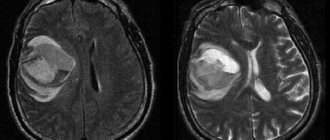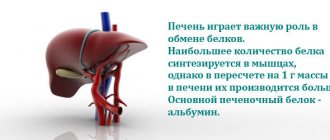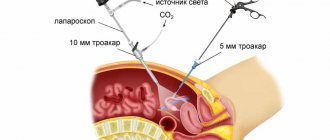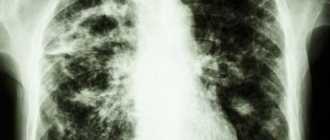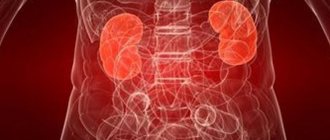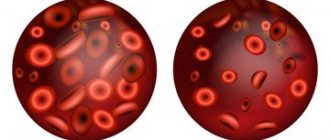Pyelonephritis is an inflammatory process that affects one kidney or both paired organs at once. Occurs in 10% of people on the planet, including children. To make a diagnosis, doctors conduct a series of tests.
Laboratory diagnostic methods are considered the main ones. They are used both to recognize the disease and to evaluate the effectiveness of treatment.
OAC, OAM – blood and urine tests, respectively, which are prescribed for the diagnosis of any disease, standard medical examination. If abnormalities are detected, a kidney problem may be suspected.
Pyelonephritis and its causes
Inflammation develops due to an attack by bacteria or viruses. To understand the essence of the problem, you need to delve into the work of the kidneys. The human urinary system consists of 2 kidneys, a bladder, 2 ureters, and a urethra.
The kidneys work around the clock, purifying the blood and producing 1-2 liters of urine. From the kidneys, fluid enters the bladder, and from it flows out through the urethra.
When the body is affected by infection, the kidneys may fail. Acute pyelonephritis is a serious illness that requires urgent treatment. If you miss time, the process will become chronic and provoke complications. When the diagnosis is made on time, a course of antibiotics will definitely help eliminate the problem.
Women are more likely to suffer from pyelonephritis, which is associated with the anatomy of their genitourinary organs. A common causative agent of infection is Escherichia coli, followed by streptococci, enterobacteria, enterococci, and Pseudomonas aeruginosa.
When can pyelonephritis not be treated at home?
Primary inflammation of the kidneys can develop completely without a reason - “sitting on a cold stone”, but in most cases the cause of the infection is based on a violation of the correct flow of urine from the renal pelvis through the ureter into the bladder and beyond.
All patients with acute pyelonephritis are hospitalized to identify a process that interferes with the passage of urine. Outpatient treatment is provided only in cases of uncomplicated inflammation of the kidney, with absolute confidence that nothing prevents urine from flowing along the natural path.
Treatment in a hospital is absolutely indicated:
- with a single kidney or the presence of a second unhealthy one,
- clinical signs of purulent inflammation and septic reaction,
- with immunodeficiency and lack of response to antibiotic treatment.
Our expert in this field:
Dmitriev Sergey Viktorovich
Urologist, Ph.D.
Call the doctor
Main symptoms
The onset of inflammation can be recognized by an increased urge to urinate and painful urination. As the disease progresses, additional signs appear:
- hematuria;
- nausea to the point of vomiting;
- urine becomes cloudy and smells unpleasant;
- consciousness becomes clouded;
- chills, fever;
- pain in the back, side.
Considering that the disease can develop from prostate hyperplasia, stones in the urinary organs, diabetes, the clinical picture will vary, complemented by symptoms of the underlying pathology. You should not engage in self-diagnosis; if the above symptoms appear, you need to visit a nephrologist, urologist, and undergo an examination.
Symptoms of carbuncle and kidney abscess
In every third person, apostematous pyelonephritis is complicated by the formation of a large abscess - a carbuncle. There can be several carbuncles, usually with a diameter of no more than 2 cm. The abscess can open into the surrounding tissue and pus forms around the kidney.
With a kidney abscess, tissue necrosis first appears, for example, as a result of a blood clot from bacteria and blood clots blocking the vessels, then pus forms, but this variant of the disease is very rare.
With purulent melting, the temperature rises over 40°, the urine is almost purulent, the condition is extremely serious with a change in consciousness. Severe pain in the lumbar region when an abscess ruptures changes in character, the condition improves somewhat for a short time, then progressively deteriorates.
From the very beginning of the development of the disease, you should trust your health to doctors, and then the likelihood of developing purulent melting is negligible. Our doctors are able to quickly diagnose and treat correctly, contact the Urology Center for help by phone
We will call you back
Leave your phone number
Both kidneys can become inflamed at once or one by one, so pyelonephritis can be bilateral or unilateral, then it is called according to the side of the lesion, for example, right-sided.
A single infection - acute pyelonephritis; if the disease occurs in waves with exacerbations and periods without illness, then it is a chronic process. Chronic pyelonephritis affects mainly women, which is due to a higher incidence of cystitis and impaired passage of urine through the ureters during pregnancy.
The Medicine 24/7 clinic not only has excellent diagnostic equipment, but also specialists who are able to establish a diagnosis when the signs of the disease are not obvious and the interpretation of the examination results is unclear. Contact the Center for Urology and Andrology by phone: +7 (495) 230-00-01.
Diagnostic methods
Suspecting a patient has pyelonephritis, the doctor, after studying the medical history and examination, will prescribe the following diagnostic measures:
- CT scan of the kidneys and other peritoneal organs;
- Ultrasound of the kidneys;
- urine test - OAM, according to Nechiporenko, Zimnitsky, tank culture;
- blood test - CBC, biochemistry, C-reactive protein, sterility.
The main thing is a urine test, but this is not always enough. Then a blood test is crucial. It is deciphered by a doctor; you should not try to diagnose yourself.
Blood test and its purpose
Patients collect urine themselves, but donate blood in a medical facility under sterile conditions. The simplest method is a sample of capillaries located close to the fingertips.
The laboratory assistant uses a scarifier and removes the required amount of material into a test tube. Another option is a vein sample. It is somewhat more complicated, but is carried out quickly and safely.
A general blood test is the basis for diagnosing most known diseases.
When the diagnosis seems obvious, which is confirmed by urine tests, there is no need to evaluate a number of blood markers; it is enough to evaluate its main parameters, changes in which are characteristic of pyelonephritis:
- creatinine;
- hemoglobin;
- protein;
- leukocytes;
- ESR;
- electrolytes.
Some of these parameters are detected using CBC, others - using blood biochemistry. For the result to be reliable, you must adhere to the following rules:
- the analysis is taken from 8 to 10 am on an empty stomach, having had the last light snack 12 hours before taking the material;
- 48 hours before the test, avoid fatty, spicy foods and alcoholic beverages;
- stop taking medications 24 hours before. The only exceptions are vital medications;
- drink enough fluids;
- Avoid excessive physical activity 24 hours before;
- directly in the laboratory you need to sit for 10 minutes, calm down, and then go to the laboratory assistant.
Treatment of pyelonephritis
After the tests are performed and the diagnosis is made, the doctor prescribes the necessary treatment. Pyelonephritis is a serious infection that can only be treated with antibiotics. Traditional medicine, so popular in everyday life, is powerless and ineffective here.
In most cases of the disease, hospitalization is not required. It is possible only for more severe forms of the disease, when intravenous administration of drugs is necessary to more quickly reach the kidneys.
The course of taking antibiotics does not exceed 7 days in total. Some drugs can be administered intravenously in the clinic, while others can be taken at home in the form of tablets.
There is rarely any damage to the kidneys after antibiotic treatment. Most people, having gotten rid of this disease, never remember it. Repeated cases are very rare.
General blood analysis
The study determines an increase in the number of leukocytes. This indicates the presence of inflammatory processes. The material is taken from the finger on the right hand. If pyelonephritis is suspected, attention is paid to a number of parameters.
Bacteriological culture is one of the most effective methods for diagnosing infections
The amount of hemoglobin and red blood cells is measured using hardware. Sometimes with pyelonephritis they do not deviate from the norm. Underestimated numbers do not directly confirm the presence of kidney inflammation; the kidney filter, from which red blood cells enter the urine, may be damaged.
The next indicator to be assessed is ESR, i.e., the rate at which red blood cells settle. It is calculated simply - the blood is left in a test tube, and after the required period of time the sedimentation rate is recorded on a special scale. Against the background of pyelonephritis, the figure greatly exceeds normal figures.
Another parameter is the number of leukocytes. Detected using medical devices. When the organ structures are inflamed, this indicator increases greatly, but it is more important for the laboratory technician to identify the leukocyte formula.
This is the composition of white blood cells. To do this, examine a drop of blood by placing it on glass under a microscope. For pyelonephritis, a characteristic picture is an increased number of granulocytes, a predominance of young cells, which differ significantly from already mature ones.
What to do if you suspect acute pyelonephritis
Blood chemistry
With pyelonephritis, an increase in urea and creatinine levels may be observed.
Biochemical examination of urine
Pyelonephritis is characterized by a decrease in the concentration of urea and potassium and an increase in the concentration of creatine in the urine.
Zimnitsky test
A decrease in the density of daily urine (in all portions below 1012 g/l) can be observed with exacerbation of pyelonephritis.
General blood analysis
There is leukocytosis, a shift in the leukocyte blood count to the left (the number of band neutrophils is 20% or higher).
Blood chemistry
Considering that pyelonephritis changes the chemical properties of the blood, it is important to conduct a biochemical analysis to identify possible deviations. Medical devices calculate the amount of protein.
It corresponds to normal values, but if the sample is examined in detail, more immunoglobulins are detected. A healthy body is characterized by a predominance of albumin.
An increased concentration of protein in the urine is a sign of an inflammatory process in the kidney
A test for C-reactive protein can identify the inflammatory process. The blood of a healthy person does not contain such a component. On the form, the level of such protein is indicated by crosses, as the volume increases, from 1 to 4. The last number indicates a serious inflammatory process affecting the kidneys.
During a biochemical analysis for pyelonephritis, the level of creatinine and urea is assessed. This test will show how well the kidneys are able to clear toxic substances from the blood.
The norms of the elements vary depending on the patient’s gender, age, and body weight. The doctor must take such features into account so as not to get false results. An increase in both indicators indicates violations affecting the organ filter.
Another parameter of biochemical analysis is the number of electrolytes. They are distributed inside the cell, in the surrounding fluid. For the body to function properly, the ratio of electrolytes must be in balance. If there are deviations, the tissues of the myocardium and brain suffer.
One of the most important indicators is the amount of sodium and potassium. The kidneys remove excess potassium from the body, and if its level is higher than normal, this indicates that the organ is not coping with its function. In this case, blood purification is carried out by hemodialysis, otherwise the accumulated harmful substances will poison the body and lead to consequences.
Prevention
Rules for successful prevention of acute pyelonephritis:
- if inflammatory processes occur in the body, start treatment on time and complete it;
- in case of chronic foci of infection, control the disease;
- undergo regular medical examinations.
In acute pyelonephritis, it is important not to start the inflammatory process so that the disease does not progress to the chronic stage. It is prohibited to stop taking antibacterial agents before the required time. When treatment is interrupted, the microorganisms do not die completely and become immune to the antibiotic. A relapse of the disease may occur, the treatment of which will be even more difficult.
To prevent exacerbations of chronic pyelonephritis, it is necessary:
- increase immunity;
- stick to a diet;
- avoid hypothermia.
Decoding analysis indicators
A specialist with a medical education can interpret the results of blood tests. The patient can independently see an increase in the indicators and suspect inflammation, but the doctor makes the decision.
Interpretation of indicators indicating pyelonephritis:
- leukocytes are higher than normal;
- increased ESR;
- alpha-2-globulins more than 13%;
- reduction in specific gravity;
- increase in uric acid more than 0.4 millimoles per 1 liter;
- decrease in red blood cells, hemoglobin;
- reduction in the amount of total protein;
- gamma globulins more than 23%.
Standard results
When interpreting the results, the specialist takes into account the patient’s gender, age, condition, presence of pathologies, and medications taken. When assessing the data, the doctor compares them with the norms:
- alpha-2-globulin 7-13%. An increase indicates kidney inflammation;
- red blood cells. Men 0-1, women 0-3. Excess – pathologies of the kidneys, urinary organs;
- gamma globulin 12-22%. Increased talk about severe inflammation;
- protein. Its detection signals problems with the kidneys, tubules, and their nodes;
- creatinine 53-115 µmol/l;
- bilirubin. Exceeding the indicators indicates inflammation, the presence of infection, intoxication;
- protein, urea. Exceeding the parameters indicates the onset of renal failure.
Doctors say that before going to the laboratory, you can suspect pyelonephritis by a change in the color of the urine. When the number of red blood cells in it increases, it acquires a red color of varying intensity, taking into account the number of red blood cells.
In addition to the color, the smell of the secreted liquid also changes - it becomes sharp; during an infectious process, urine smells unpleasantly of acetone. When faced with such manifestations, you need to go to the doctor, take simple tests and assess the state of the body, including the kidneys.
To summarize, we need to recall that pyelonephritis is a serious disease that requires timely diagnosis and immediate treatment. If you ignore the problem, refuse prevention, treatment, neglect hygiene and diet, the inflammation will become chronic, will remain forever and will periodically torment the patient with symptoms, which can cause serious consequences.
